New Approach for Automated Explanation of Material Phenomena (AA6082) Using Artificial Neural Networks and ChatGPT
Abstract
1. Introduction
2. Materials and Methods
2.1. Description of AA6082
2.2. CAE Artificial Neural Network
- CAE ANN predicts unknown (k-th) output parameter as a mean value by using the general formula [5]:
- The local standard error (also, standard deviation) of the prediction is calculated by using the following formula [35]:
- An estimation of the reliability of the predicted mean value based on data density is calculated by using the following formula [5]:
2.3. General Framework for the Automatic Explanation of the Obtained Results by the (CAE) ANN
3. Results
3.1. Rules for Explaining the Results
3.2. Illustration of Explanations for Various Instances of Graphical Displays of Results for Hot Extrusion of AA6082
- Elongation: The predicted elongation at this point is approximately 11.95. This is the expected outcome of the elongation test given these specific conditions of casting speed and Si content.
- Standard Deviation: The standard deviation associated with this prediction is not directly quoted, but it can be inferred from the provided text files that it would likely be a value close to the nearby standard deviation values. A lower standard deviation would indicate that the predicted elongation value of 11.95 is more reliable.
- Data Density: The data density at this point is 0.80 This value indicates the number of data points or the amount of information from the experiments or simulations that contributed to the prediction at this specific point. A higher data density usually means that the prediction is based on more information and could be considered more reliable.
- Increasing Casting Speed (Si constant at 0.9 wt.%): At a constant silicon content of 0.9 wt.%, as the casting speed increases from 7.4 mm/s to the right, the solid lines representing elongation curve upwards. This means that elongation increases with casting speed in that range. Therefore, if you increase the casting speed while maintaining the Si content at 0.9 wt.%, the prediction for elongation will be higher.
- Increasing Si Content (Casting Speed constant at 7.4 mm/s): When the casting speed is held constant at 7.4 mm/s, and we look at increasing Si content vertically on the graph, the solid isolines for elongation dip downward as we move up, which indicates that elongation decreases as the Si content increases at this casting speed.
- High yield strength (higher values on the graph),
- Lower standard deviation (indicating consistency in the data),
- Acceptable levels of elongation (based on the previous elongation graph), and
- High data density (darker areas on the graphs).
- 1.
- Sensitivity and Predictability: With the additional fixed parameters (ram speed and Mn content), the sensitivity and predictability of yield strength to changes in Si con-tent and casting speed may differ. The shape and spacing of the isolines in the new graphs suggest that the relationships between these variables and yield strength have changed.
- 2.
- Effect of Fixed Parameters: By fixing ram speed and Mn content, we are looking at a more specific scenario in the casting process. These fixed conditions seem to alter the response of the material’s yield strength to changes in Si content and casting speed, as compared to when these parameters were not fixed.
- 3.
- Data Density and Reliability: Assuming data density is represented by the shading in both sets of graphs, it appears that predictions are most reliable in the regions with darker shading. It’s important to consider this when evaluating the yield strength at any given point on the graph.
4. Discussion
- A tiny fraction of knowledge from the existing global knowledge repository (for example, comments on likely microstructural level causes for predicted results) has already been included in the explanation, as ChatGPT has information from many publicly available scientific and other sources. The authors argue that, in order to provide a more objective interpretation of the (CAE) ANN predictions, a language that is otherwise “less beautiful” and stricter, specialized interpretation software with fewer linguistic masks will need to be developed.
- The incorporation of all available knowledge is intended, with deliberate gathering, verification, and then integration of specific knowledge from the field under consideration. Such an example would be, e.g., supplementing the automatic explanation with complex chemical reactions and/or mechanical microstructural phenomena as seen through the eyes of a human expert with many years of experience and knowledge, as explicitly stated in Section 2.1 when explaining the effect of important phenomena during hot extrusion of AA6082.
- An explanation tailored to various needs and knowledge levels should be possible with the development of an application, or specific parts of an application, in connection with ChatGPT (or other large language models). These applications will likely be closed and intended for a specific public (engineers, researchers, students) at different quality levels. Because the explanation’s language will be more objective, there will be a far lower possibility of automatic (machine) explanations being misunderstood. Additionally, if needed, this will guarantee the confidentiality of certain knowledge, which is a business secret.
5. Conclusions
- A general concept is proposed to explain the observed phenomena in metallic materials. The proposed framework aims to mimic the traditional scientific approach, which is based on mathematical representations of the considered physical phenomena.
- The proposed framework is applied to the example of hot extrusion of AA6082, where CAE is used as an artificial neural network to model the phenomenon and predict its key parameters.
- As a byproduct of the CAE ANN intermediate computation, values are often provided in conjunction with the CAE ANN predicted outcomes. Small values are typically used to define the limits of the CAE models.
- ChatGPT, as one of the publicly accessible large language model tools, is used to explain/interpret the CAE ANN predicted results according to the proposed framework.
- The obtained results are discussed, and some recommendations for improving the proposed framework are made.
- The basic idea is to enable researchers and practicing engineers to better understand the physical phenomena under consideration and the results provided by empirical models made with ANNs.
Supplementary Materials
Author Contributions
Funding
Institutional Review Board Statement
Informed Consent Statement
Data Availability Statement
Acknowledgments
Conflicts of Interest
References
- Kekez, S.; Kubica, J. Application of Artificial Neural Networks for Prediction of Mechanical Properties of CNT/CNF Reinforced Concrete. Materials 2021, 14, 5637. [Google Scholar] [CrossRef] [PubMed]
- Guo, Z.; Sha, W. Modelling the correlation between processing parameters and properties of maraging steels using artificial neural network. Comput. Mater. Sci. 2004, 29, 12–28. [Google Scholar] [CrossRef]
- Capdevila, C.; Garcia-Mateo, C.; Caballero, F.G.; Garcıa de Andres, C. Neural network analysis of the influence of processing on strength and ductility of automotive low carbon sheet steels. Comput. Mater. Sci. 2006, 38, 192–201. [Google Scholar] [CrossRef][Green Version]
- Vecko-Pirtovsek, T.; Peruš, I.; Kugler, G.; Terčelj, M. Towards improved reliability of the analysis of factors influencing the properties on steel in industrial practice. ISIJ Int. 2009, 49, 395–401. [Google Scholar] [CrossRef][Green Version]
- Peruš, I.; Kugler, G.; Malej, S.; Terčelj, M. Contour Maps for Simultaneous Increase in Yield Strength and Elongation of Hot Extruded Aluminum Alloy 6082. Metals 2022, 12, 461. [Google Scholar] [CrossRef]
- Terčelj, M.; Fazarinc, M.; Kugler, G.; Peruš, I. Influence of the chemical composition and process parameters on the mechanical properties of an extruded aluminium alloy for highly loaded structural parts. Constr. Build Mater. 2013, 44, 781–791. [Google Scholar] [CrossRef]
- Li, J.; Du, D.; Yang, X.; Qiu, Y.; Xiang, S. Determining Homogenization Parameters and Predicting 5182-Sc-Zr Alloy Properties by Artificial Neural Networks. Materials 2023, 16, 5315. [Google Scholar] [CrossRef] [PubMed]
- Wu, X.; Zhang, H.; Cui, H.; Ma, Z.; Song, W.; Yang, W.; Jia, L.; Zhang, H. Quantitative Relationship Analysis of Mechanical Properties with Mg Content and Heat Treatment Parameters in Al–7Si Alloys Using Artificial Neural Network. Materials 2019, 12, 718. [Google Scholar] [CrossRef]
- Mosleh, A.O.; Kotova, E.G.; Kotov, A.D.; Gershman, I.S.; Mironov, A.E. Bearing Aluminum-Based Alloys: Microstructure, Mechanical Characterizations, and Experiment-Based Modeling Approach. Materials 2022, 15, 8394. [Google Scholar] [CrossRef]
- Wiciak-Pikuła, M.; Felusiak-Czyryca, A.; Twardowski, P. Tool Wear Prediction Based on Artificial Neural Network during Aluminum Matrix Composite Milling. Sensors 2020, 20, 5798. [Google Scholar] [CrossRef]
- Lacki, P.; Derlatka, A.; Więckowski, W.; Adamus, J. Development of FSW Process Parameters for Lap Joints Made of Thin 7075 Aluminum Alloy Sheets. Materials 2024, 17, 672. [Google Scholar] [CrossRef]
- Merayo, D.; Rodríguez-Prieto, A.; Camacho, A.M. Prediction of Mechanical Properties by Artificial Neural Networks to Characterize the Plastic Behavior of Aluminum Alloys. Materials 2020, 13, 5227. [Google Scholar] [CrossRef] [PubMed]
- Jimenez-Martinez, M.; Alfaro-Ponce, M.; Muñoz-Ibañez, C. Design of an Aluminum Alloy Using a Neural Network-Based Model. Metals 2022, 12, 1587. [Google Scholar] [CrossRef]
- Li, S.; Chen, W.; Bhandari, K.S.; Jung, D.W.; Chen, X. Flow Behavior of AA5005 Alloy at High Temperature and Low Strain Rate Based on Arrhenius-Type Equation and Back Propagation Artificial Neural Network (BP-ANN) Model. Materials 2022, 15, 3788. [Google Scholar] [CrossRef] [PubMed]
- Huang, C.; Jia, X.; Zhang, Z. A Modified Back Propagation Artificial Neural Network Model Based on Genetic Algorithm to Predict the Flow Behavior of 5754 Aluminum Alloy. Materials 2018, 11, 855. [Google Scholar] [CrossRef] [PubMed]
- Xiong, T.; Wang, L.; Gao, X.; Liu, G. Inverse Identification of Residual Stress Distribution in Aluminium Alloy Components Based on Deep Learning. Appl. Sci. 2022, 12, 1195. [Google Scholar] [CrossRef]
- Rajczakowska, M.; Szeląg, M.; Habermehl-Cwirzen, K.; Hedlund, H.; Cwirzen, A. Interpretable Machine Learning for Prediction of Post-Fire Self-Healing of Concrete. Materials 2023, 16, 1273. [Google Scholar] [CrossRef] [PubMed]
- Xue, J.; Huang, J.; Li, M.; Chen, J.; Wei, Z.; Cheng, Y.; Lai, Z.; Qu, N.; Liu, Y.; Zhu, J. Explanatory Machine Learning Accelerates the Design of Graphene-Reinforced Aluminium Matrix Composites with Superior Performance. Metals 2023, 13, 1690. [Google Scholar] [CrossRef]
- Grabec, I.; Sachse, W. Synergetics of Measurement, Prediction and Control; Springer Series in Synergetics; Springer: Berlin/Heidelberg, Germany, 1997. [Google Scholar]
- Peruš, I.; Poljansek, K.; Fajfar, P. Flexural deformation capacity of rectangular RC columns determined by the CAE method. Earthq. Eng. Struct. Dyn. 2006, 35, 1453–1470. [Google Scholar] [CrossRef]
- Specht, D.F. A general regression neural network. IEEE Trans. Neural Netw. 1991, 2, 568–576. [Google Scholar] [CrossRef]
- Terčelj, M.; Turk, R.; Kugler, G.; Peruš, I. Neural network analysis of the influence of chemical composition on surface cracking during hot rolling of AISI D2 tool steel. Comput. Mat. Sci. 2008, 42, 625–637. [Google Scholar] [CrossRef]
- Bombač, D.; Terčelj, M.; Kugler, G.; Peruš, I. Amelioration of surface cracking during hot rolling of AISI D2 tool steel. Mater. Sci. Techn. 2018, 34, 1723–1736. [Google Scholar] [CrossRef]
- Carpenter, D.; Min, W.; Lee, S.; Ozogul, G.; Zheng, X.; Lester, J. Assessing Student Explanations with Large Language Models Using Fine-Tuning and Few-Shot Learning. In Proceedings of the 19th Workshop on Innovative Use of NLP for Building Educational Applications (BEA 2024), Mexico City, Mexico, 20–21 June 2024; pp. 403–413. [Google Scholar]
- Zhao, J.; Yao, Z.; Yang, Z.; Yu, H. SELF-EXPLAIN: Teaching Large Language Models to Reason Complex Questions by Themselves. arXiv 2023, arXiv:2311.06985. [Google Scholar]
- Brin, D.; Sorin, V.; Barash, Y.; Konen, E.; Nadkarni, G.; Glicksberg, B.S.; Klang, E. Assessing GPT-4 multimodal performance in radiological image analysis. medRxiv 2023, 2023-11. [Google Scholar]
- Yang, Z.; Yao, Z.; Tasmin, M.; Vashisht, P.; Jang, W.S.; Ouyang, F.; Wang, B.; Berlowitz, D.; Yu, H. Performance of multimodal GPT-4V on USMLE with Image: Potential for imaging diagnostic support with explanations. medRxiv 2023, 2023-10. [Google Scholar]
- Jin, Q.; Chen, F.; Zhou, Y.; Xu, Z.; Cheung, J.M.; Chen, R.; Summers, R.M.; Rousseau, J.F.; Ni, P.; Landsman, M.J.; et al. Hidden flaws behind expert-level accuracy of gpt-4 vision in medicine. arXiv 2024, arXiv:2401.08396. [Google Scholar] [CrossRef] [PubMed]
- Miao, J.; Thongprayoon, C.; Cheungpasitporn, W.; Cornell, L.D. Performance of GPT-4 Vision on kidney pathology exam questions. Am. J. Clin. Pathol. 2024, aqae030. [Google Scholar] [CrossRef]
- OpenAI. ChatGPT (Version 3.5) [Large Language Model]. 2023. Available online: https://chat.openai.com/chat (accessed on 15 March 2024).
- Mrówka, N.G.; Sieniawski, J.; Wierzbińska, M. Intermetallic phase particles in 6082 aluminium alloy. Arch. Mater. Sci. Eng. 2007, 28, 69–76. [Google Scholar]
- Liu, Y.L.; Kang, S.B.; Kim, H.W. The complex microstructures in as-cast Al-Mg-Si alloy. Mater. Lett. 1999, 41, 167–272. [Google Scholar] [CrossRef]
- Mrówka, N.G.; Sieniawski, J. Influence of heat treatment on the microstructure and mechanical properties of 6005 and 6082 aluminium alloys. J. Mater. Proc. Technol. 2005, 163, 367–372. [Google Scholar] [CrossRef]
- Peruš, I.; Fajfar, P. Ground-motion prediction by a non-parametric approach. Earthq. Eng. Struct. Dyn. 2010, 39, 1395–1416. [Google Scholar] [CrossRef]
- Tsuchida, S.; Nakayama, T. MALDI-Based Mass Spectrometry in Clinical Testing: Focus on Bacterial Identification. Appl. Sci. 2022, 12, 2814. [Google Scholar] [CrossRef]
- Shen, J.; Li, R.; Shi, J.; Zhou, G. Modified Multi-Support Response Spectrum Analysis of Structures with Multiple Supports under Incoherent Ground Excitation. Appl. Sci. 2019, 9, 1744. [Google Scholar] [CrossRef]
- Merrick, L.; Taly, A. The explanation game: Explaining machine learning models using shapley values. In Proceedings of the Machine Learning and Knowledge Extraction: 4th IFIP TC 5, TC 12, WG 8.4, WG 8.9, WG 12.9 International Cross-Domain Conference, CD-MAKE 2020, Dublin, Ireland, 25–28 May 2020; Proceedings 4. Springer International Publishing: Berlin, Germany, 2020; pp. 17–38. [Google Scholar]
- Peruš, I.; Terčelj, M.; Kugler, G. Determination of scrap/supply probability curves for the mechanical properties of aluminium alloys in hot extrusion using a neural network-like approach. Expert Syst. Appl. 2012, 39, 5634–5640. [Google Scholar] [CrossRef]
- Malej, S.; Terčelj, M.; Peruš, I.; Kugler, G. Influence of cooling mode in relation to casting and extrusion parameters on mechanical properties of AA6082. Mater. Geoenvironment 2016, 64, 11–20. [Google Scholar] [CrossRef][Green Version]
- Qayyum, F.; Khan, M.A.; Kim, D.-H.; Ko, H.; Ryu, G.-A. Explainable AI for Material Property Prediction Based on Energy Cloud: A Shapley-Driven Approach. Materials 2023, 16, 7322. [Google Scholar] [CrossRef]
- Pradhan, B.; Jena, R.; Talukdar, D.; Mohanty, M.; Sahu, B.K.; Raul, A.K.; Abdul Maulud, K.N. A New Method to Evaluate Gold Mineralisation-Potential Mapping Using Deep Learning and an Explainable Artificial Intelligence (XAI) Model. Remote Sens. 2022, 14, 4486. [Google Scholar] [CrossRef]
- Hoffmann, R.; Reich, C. A Systematic Literature Review on Artificial Intelligence and Explainable Artificial Intelligence for Visual Quality Assurance in Manufacturing. Electronics 2023, 12, 4572. [Google Scholar] [CrossRef]
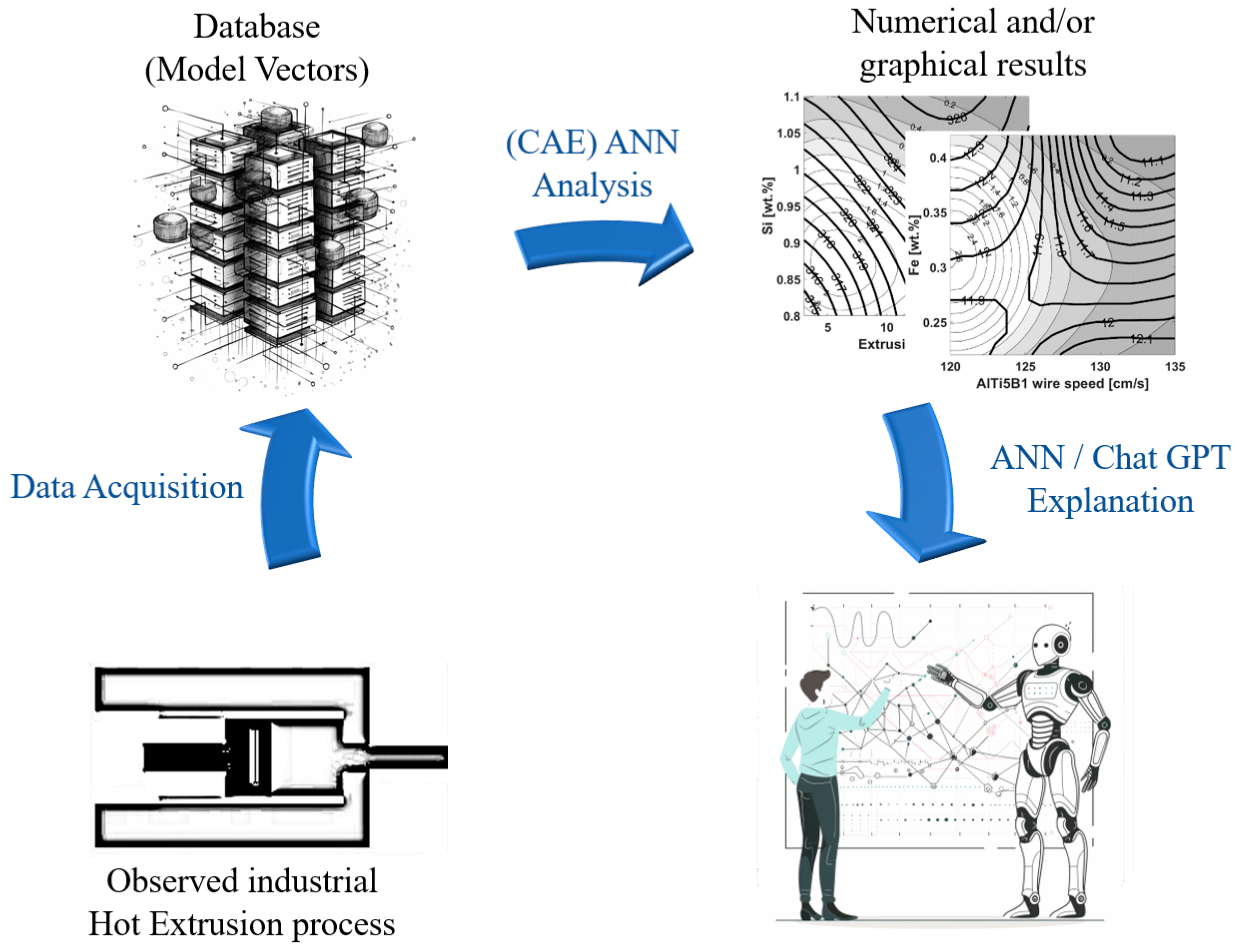
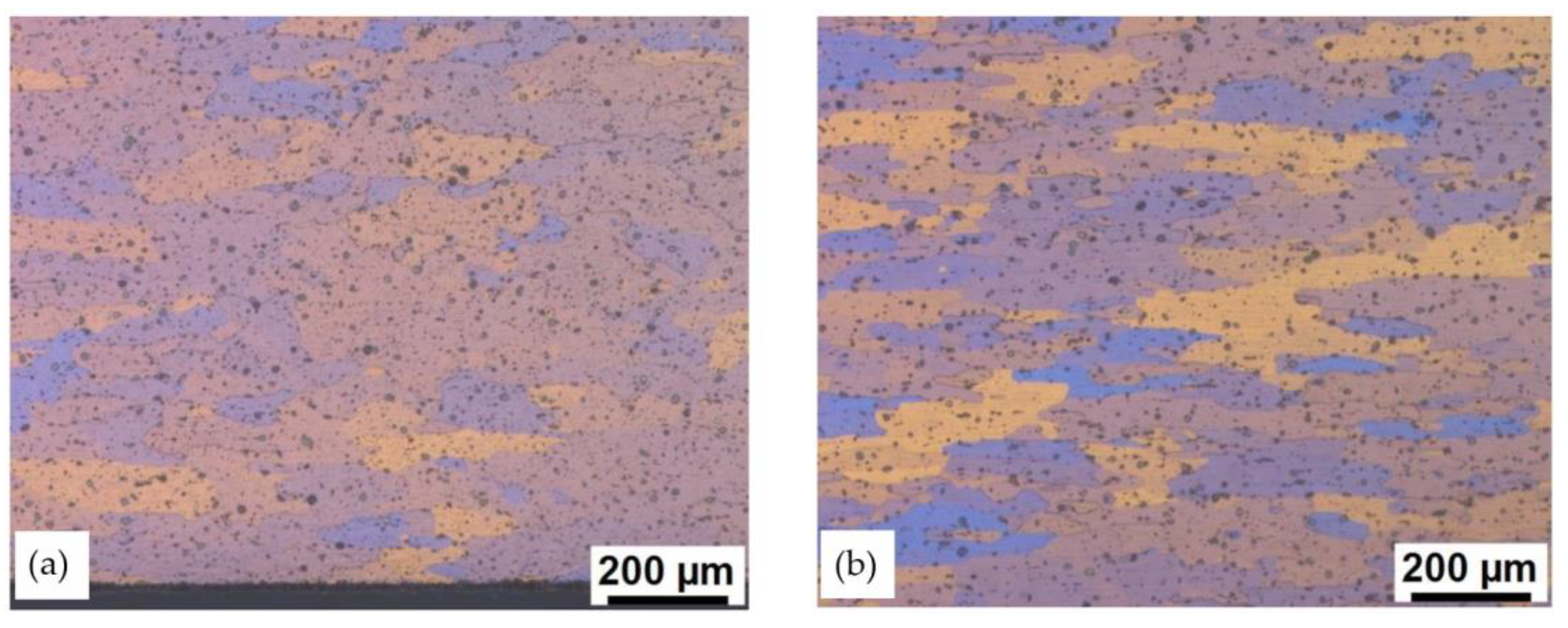
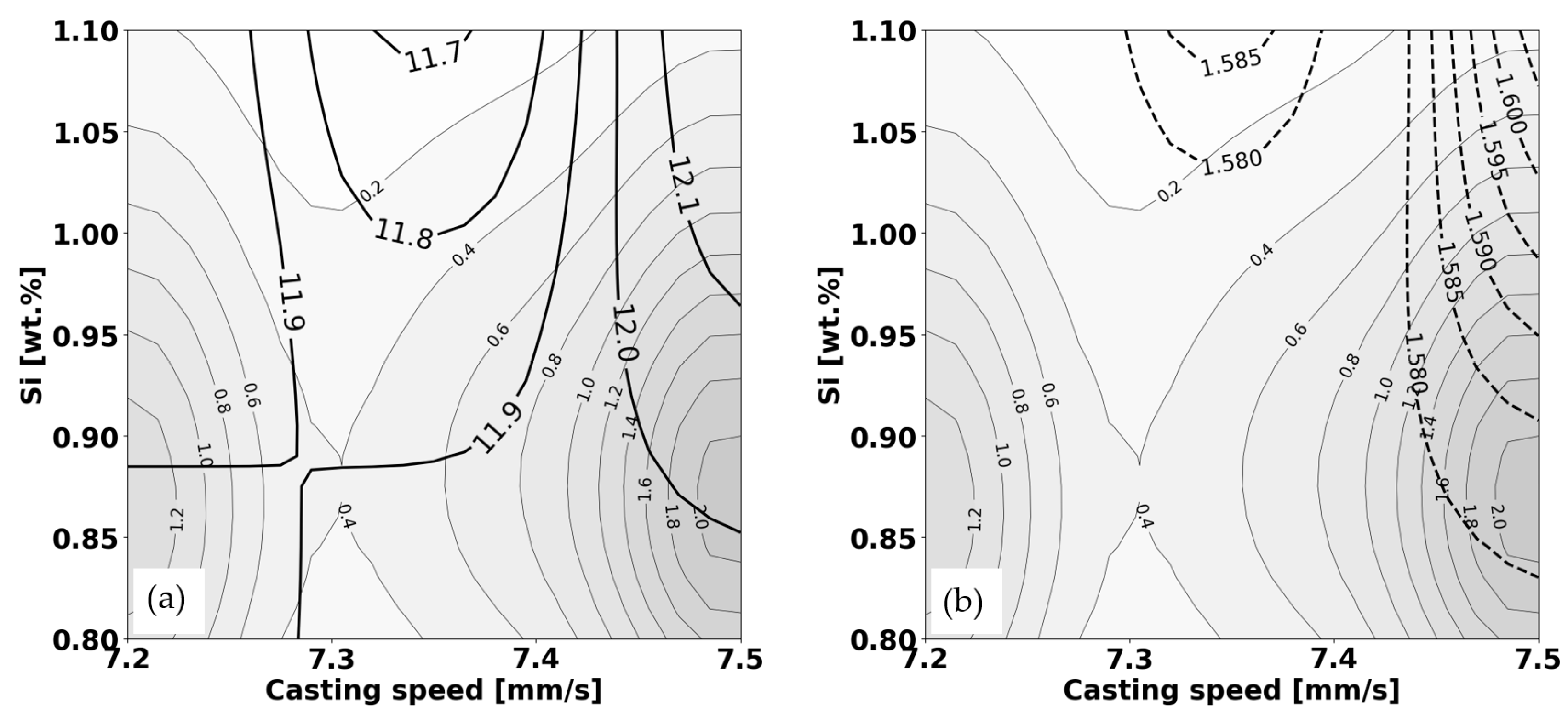
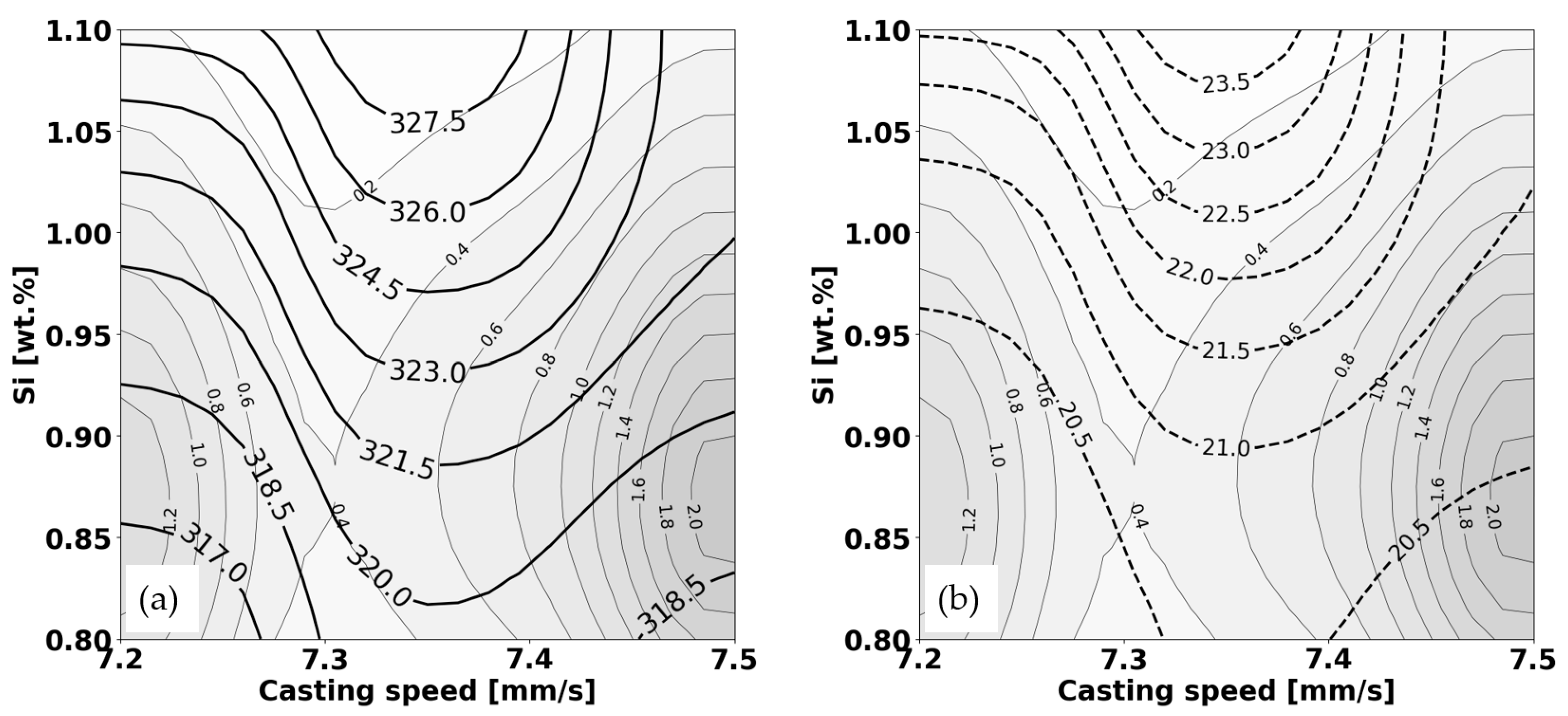
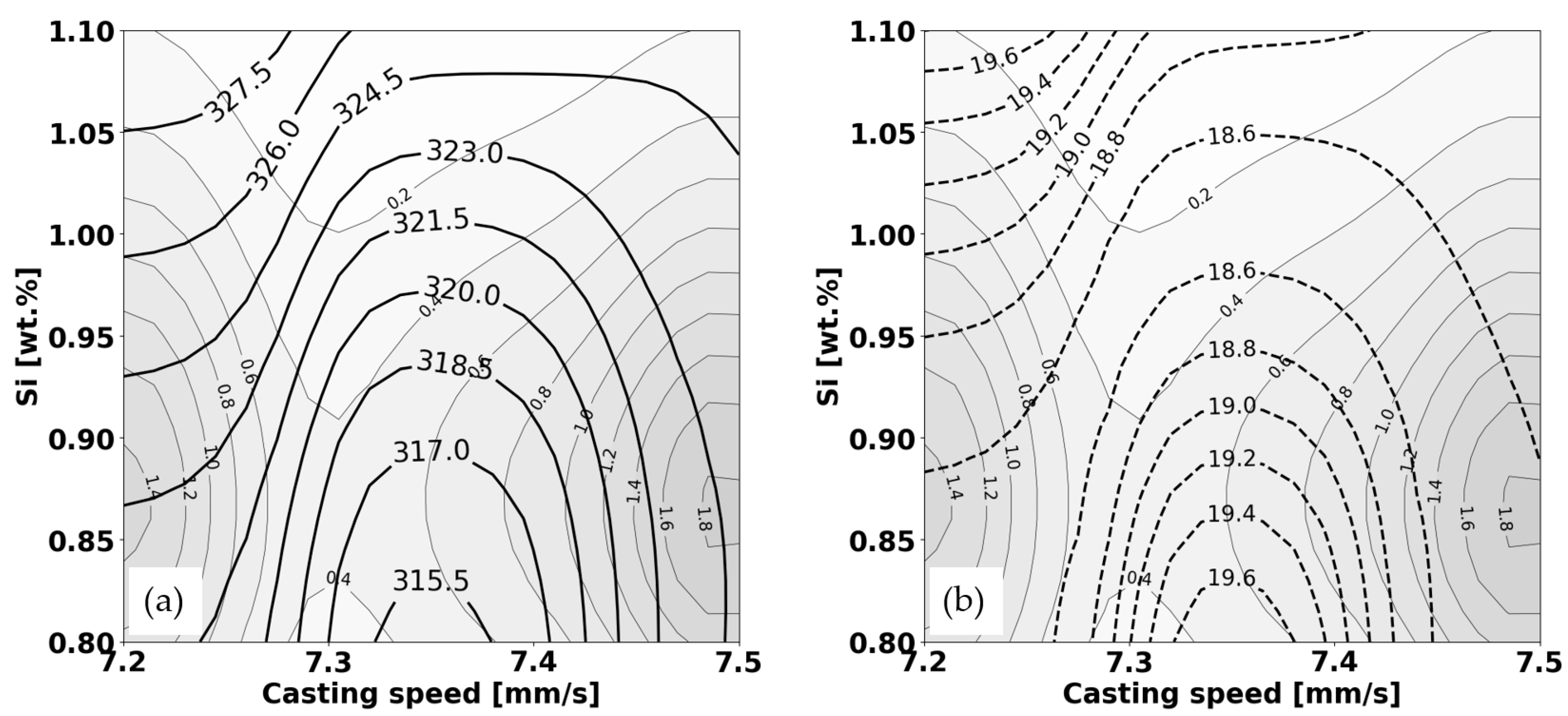
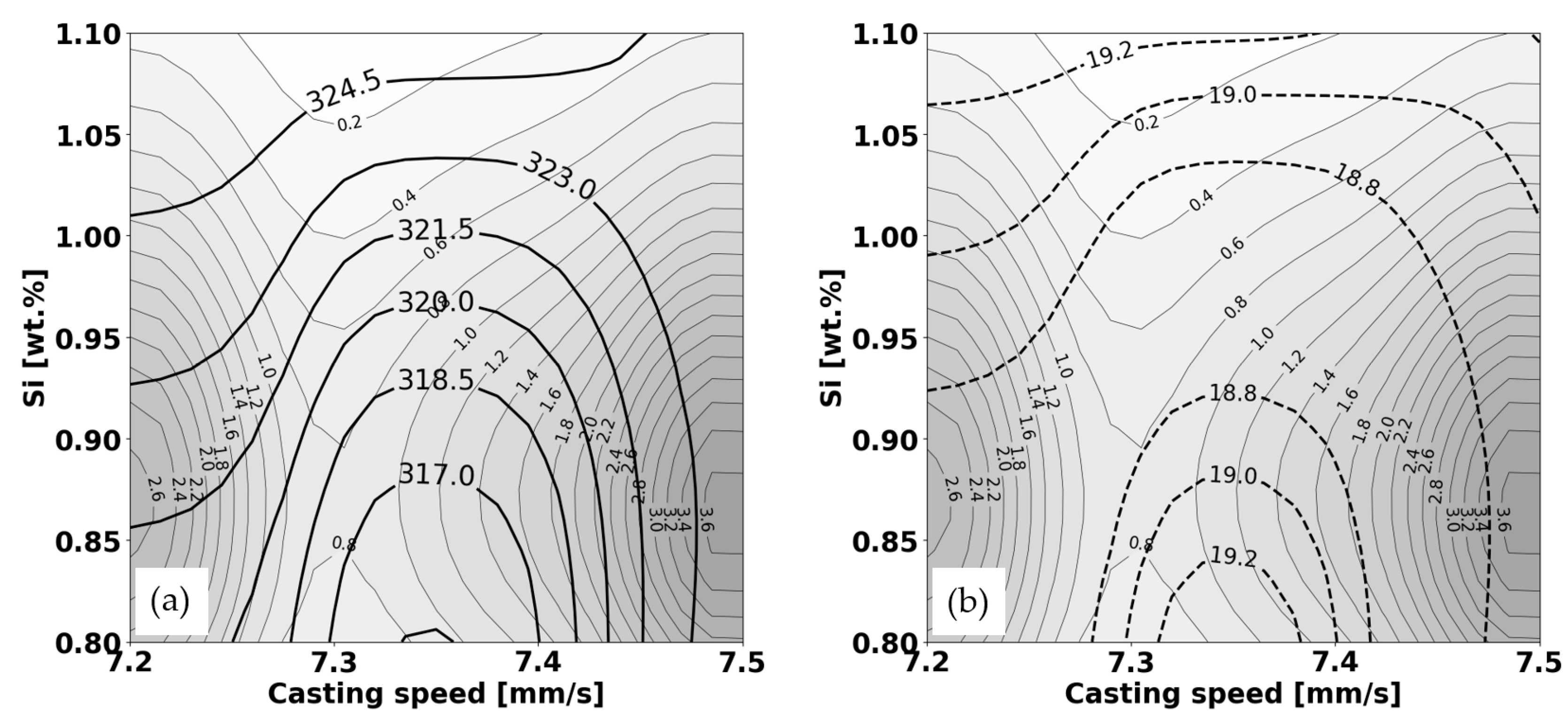

Disclaimer/Publisher’s Note: The statements, opinions and data contained in all publications are solely those of the individual author(s) and contributor(s) and not of MDPI and/or the editor(s). MDPI and/or the editor(s) disclaim responsibility for any injury to people or property resulting from any ideas, methods, instructions or products referred to in the content. |
© 2024 by the authors. Licensee MDPI, Basel, Switzerland. This article is an open access article distributed under the terms and conditions of the Creative Commons Attribution (CC BY) license (https://creativecommons.org/licenses/by/4.0/).
Share and Cite
Goričan, T.; Terčelj, M.; Peruš, I. New Approach for Automated Explanation of Material Phenomena (AA6082) Using Artificial Neural Networks and ChatGPT. Appl. Sci. 2024, 14, 7015. https://doi.org/10.3390/app14167015
Goričan T, Terčelj M, Peruš I. New Approach for Automated Explanation of Material Phenomena (AA6082) Using Artificial Neural Networks and ChatGPT. Applied Sciences. 2024; 14(16):7015. https://doi.org/10.3390/app14167015
Chicago/Turabian StyleGoričan, Tomaž, Milan Terčelj, and Iztok Peruš. 2024. "New Approach for Automated Explanation of Material Phenomena (AA6082) Using Artificial Neural Networks and ChatGPT" Applied Sciences 14, no. 16: 7015. https://doi.org/10.3390/app14167015
APA StyleGoričan, T., Terčelj, M., & Peruš, I. (2024). New Approach for Automated Explanation of Material Phenomena (AA6082) Using Artificial Neural Networks and ChatGPT. Applied Sciences, 14(16), 7015. https://doi.org/10.3390/app14167015






